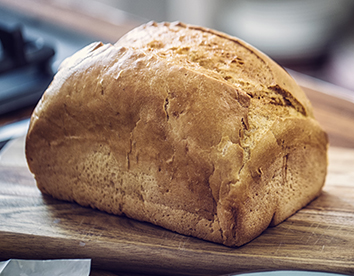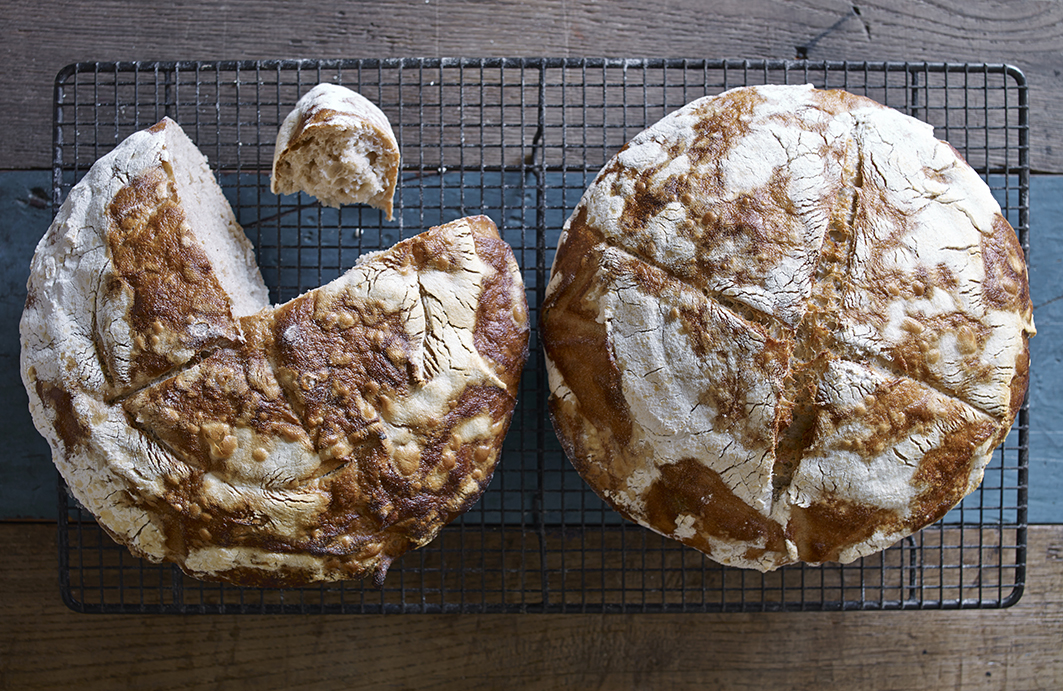Self-confessed non-baker Alex Rushmer’s ode to bread
I am not a baker. At least not by the standards now expected of one thanks to the proliferation of baking shows on television and the unstoppable rise (pun intentional) of baking-related books and paraphernalia.
The weighing, measuring, precision, timings and accuracy needed don’t fit with the parts of my psyche that allow me to be a good cook – I much prefer the free-form approach, one that can be tweaked and altered along the way rather than setting a path that cannot be wavered from.
If something goes awry when I’m doing a braised beef dish, 90{b486c5a37ab2d325d17e17d701cb2567b1ecd1814e8ceb33effa2a4f1f171d46} of the time it is fixable and the final result will be imperceptibly different from the intended. If a mistake is made during the baking process, then 90{b486c5a37ab2d325d17e17d701cb2567b1ecd1814e8ceb33effa2a4f1f171d46} of the time it is unfixable and the final result will end up in the bin. Maybe I’m just bad at following recipes though.

But whilst my skills with cakes and the like may be lacking, when it comes to bread it is a different story. Having now baked at least two different loaves every day at The Hole in the Wall for the last five years, I’m happy that I know my way around a loaf. Good bread is a cornerstone of a good meal and my belief is that it is often a good indicator of the quality of the meal to follow.
Over the years it has been a source of near endless fascination to me that this seemingly simple combination of flour, water, yeast and salt can provide such a huge variety of products. Tiny variables seem to be extrapolated down the line of the bread-baking process so that a mere tweak early on can create a wildly different product by the time the finished loaf emerges from the oven.
Bakers talk obsessively about ‘hydration percentages’ and ‘fermentation times’, which do make for large variations in finish, especially with sourdough, but what I have found more interesting is the sheer number of alternatives in loaves achieved by using different flours, fats, liquids, proving methods and shaping techniques.
It is rare that I will bake the same loaf two days running and that day’s bread will be dependent on my mood and other extraneous matters – a recent trip to Italy resulted in a great many foccacias being pulled from the oven, some flavoured with nothing more than good olive oil and sea salt, others studded with chopped rosemary, roasted garlic or even raisins.
“It is rare that I will bake the same bread two days running. It’s dependent on my mood“
A new beer often finds its way into a wholemeal ale loaf – malty and rich with a soft, gentle crumb thanks to the fervent yeast activity added by the beer and milk – and butter will feature regularly in place of water to create a rich white loaf, proved slowly in the fridge and baked in a hot and steamy oven to yield a tough crust with an airy toothsome texture within.
But the most popular loaf, and the one which earns the most requests for the recipe, is the dark soda bread flavoured with black treacle. It is sweet and bitter at the same time, reminiscent of malt loaf and excellent just warm from the oven, covered in rapidly melting salted butter. One day I may even get around to writing down the recipe.

